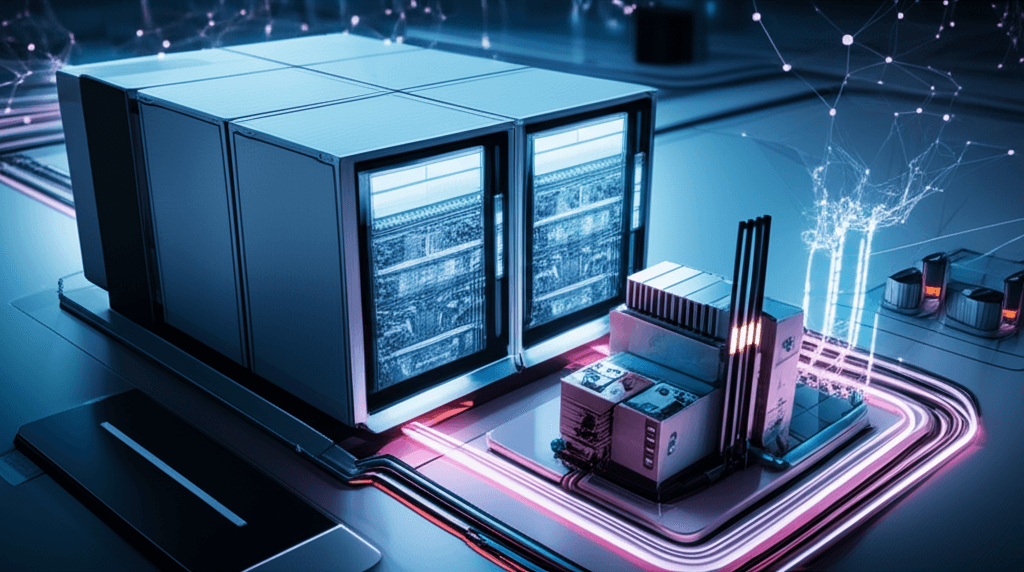xAI Ships Entire Power Plant to US for AI Compute "Gigafactory"
xAI's unprecedented move to import a power plant underscores the colossal energy needs driving the AI 'Gigafactory' race.
July 8, 2025

In a move that underscores the colossal energy requirements of the burgeoning artificial intelligence industry, Elon Musk's xAI has reportedly purchased a power plant from overseas to be shipped to the United States. This extraordinary measure is intended to support a new, massive data center, part of xAI's ambitious expansion and its quest to develop more powerful AI tools. The decision highlights the intensifying competition in the AI sector and the extreme lengths companies are willing to go to secure the immense power needed for their computational infrastructure. The new facility is expected to be a "Gigafactory of Compute," a term Musk has used to describe a supercomputer that would be significantly larger than any existing GPU clusters.
The scale of xAI's planned data center in Memphis, Tennessee, necessitates a dedicated power source. The proposed supercomputer is expected to house approximately one million of Nvidia's advanced Blackwell GPUs, a significant increase from the 200,000 Hopper GPUs in its current "Colossus" supercomputer.[1][2] The power consumption of such a massive array of chips is staggering, with estimates ranging from 1,400 to nearly 2,000 megawatts, an amount of electricity that could power roughly 1.9 million homes.[1][3][2] This enormous energy demand far outstrips the capacity of many local power grids, forcing tech companies to seek unconventional solutions. The importation of an entire power plant, a move confirmed by Musk, is a direct response to the inability to get a new one built in the U.S. in time to meet the project's aggressive timeline.[2] The new data center is part of a broader expansion in Memphis, where xAI has already purchased a one-million-square-foot former factory to be converted into additional data center space.[2][4]
The decision to build a private power plant is rooted in the practical challenges of powering such an energy-intensive facility. xAI's existing Colossus supercomputer in Memphis already consumes around 300 megawatts and has faced difficulties in securing an adequate power supply from the local grid.[3] Initially, the site had access to only 8 megawatts of power.[5] To bridge the gap, xAI has deployed dozens of natural gas turbines, a move that has drawn scrutiny from environmental groups over potential violations of the Clean Air Act.[1][5] The company received permits for 15 natural gas turbines to serve as a backup power source, but has faced allegations of operating more generators than permitted.[1][6][7][5] The new, larger data center's power needs are on a completely different scale, making reliance on the existing grid and temporary generators an unviable long-term strategy. The Memphis Light, Gas and Water utility has indicated that the new facility could require up to 1.1 gigawatts of power, representing a significant portion of Shelby County's total demand.[8]
The enormous power demands of AI data centers are a growing concern for the technology industry and for utility providers. The Tennessee Valley Authority (TVA), the regional power company, has approved xAI's request for 150 megawatts for its initial Memphis facility but has also acknowledged the strain that large industrial users are putting on the power grid.[9][10] The proliferation of data centers is forcing utilities to consider significant infrastructure upgrades and new power generation projects, including proposals for new natural gas plants and even small modular nuclear reactors.[11][12] Environmental groups have raised concerns about the carbon footprint of these power-hungry facilities and the potential impact on local communities and electricity rates.[13][10] In response to some of these concerns, xAI has invested in an $80 million water recycling plant to conserve billions of gallons of water annually and has deployed Tesla Megapack battery systems to help stabilize the local grid.[4][7]
The move by xAI to import its own power plant is a clear signal of the escalating arms race in artificial intelligence. Recently bolstered by a $10 billion funding round, xAI is aggressively expanding its infrastructure to compete with rivals like OpenAI and Google.[1][13] Musk has stated his ambition to build a supercomputer that is at least four times larger than the biggest GPU clusters currently in operation and has personally guaranteed its completion by the fall of 2025.[14][15][16] This "Gigafactory of Compute" is essential for training the next generation of xAI's models, including its chatbot Grok.[17][16] The massive investment in both computing hardware and the energy infrastructure to power it demonstrates the immense capital required to remain at the forefront of AI development. The decision to vertically integrate power generation could become a new trend for major AI players as they grapple with the limitations of existing energy infrastructure in the face of exponential computational growth.
Sources
[2]
[3]
[10]
[14]
[17]